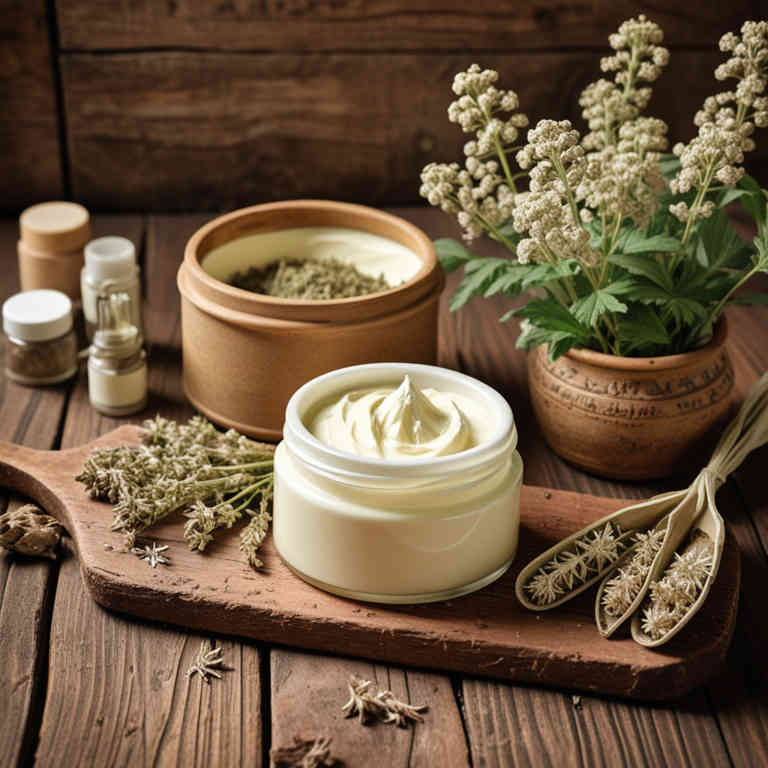Valeriana officinalis cream for medicinal use

Valeriana officinalis cream is a topical herbal preparation made from the root of the valerian plant, known for its calming properties.
It is commonly used in herbalism to alleviate symptoms of anxiety, insomnia, and nervous tension. The cream is applied directly to the skin, often on the temples, neck, or wrists, to promote relaxation and ease mental stress. Its sedative effects are believed to be due to the presence of compounds like valerenic acid.
This preparation is valued for its natural approach to managing stress-related conditions without the use of synthetic medications.
Uses
Valeriana officinalis cream has been used to alleviate symptoms of anxiety, insomnia, and muscle tension for centuries.
Historically, it was valued in ancient Greek and Roman medicine for its calming properties, often applied topically or consumed as a remedy for restlessness and nervous disorders. Traditional uses also extended to treating headaches, muscle spasms, and digestive issues, with the plant's roots being the primary source of its active compounds. In modern times, the cream is widely used as a natural alternative for stress relief and sleep support, incorporating valerenic acid and other compounds known for their sedative and anxiolytic effects.
Its continued popularity reflects both historical wisdom and contemporary interest in holistic health approaches.
Benefits
Valeriana officinalis cream has health benefits such as promoting relaxation, reducing anxiety, and alleviating symptoms of insomnia.
This cream is derived from the root of the valerian plant, which contains compounds like valerenic acid that have sedative and calming effects. It can help ease muscle tension and improve sleep quality by acting on the central nervous system. The topical application of this cream may also provide relief from stress-related headaches and muscle aches.
It is often used as a natural alternative to pharmaceutical sedatives for those seeking holistic wellness solutions.
Constituents
Valeriana officinalis cream active constituents include valerenic acid, valerianic acid, and various volatile oils, which are responsible for its calming and sedative effects.
These compounds interact with the central nervous system to reduce anxiety and promote relaxation. The cream is often used topically to alleviate symptoms of muscle tension and stress-related conditions. It may also help improve sleep quality by reducing restlessness and nervousness.
Due to its soothing properties, it is a popular choice for natural remedies in aromatherapy and holistic health practices.
Preparation
To make Valeriana officinalis cream, first gather fresh or dried Valeriana officinalis (valerian root) and grind it into a fine powder.
Next, mix the powdered root with a base of coconut oil or another mild carrier oil, using a ratio of approximately 1 part root to 3 parts oil. Allow the mixture to steep for at least 48 hours to infuse the oil with the herb's properties. After straining the mixture through a fine mesh or cheesecloth, add a small amount of beeswax to solidify the cream and enhance its consistency.
Store the finished cream in a cool, dark place to preserve its potency and effectiveness.
Side Effects
Valeriana officinalis cream may lead to mild sedative effects, including drowsiness and relaxation of muscles, due to the presence of valerenic acid and other compounds that interact with the central nervous system.
It is often used for muscle pain, inflammation, and sleep disorders. However, possible side effects include gastrointestinal discomfort, such as nausea or stomach upset, and allergic reactions in individuals sensitive to plants in the Valerianaceae family. Prolonged use may result in dependency or reduced effectiveness over time.
It is important to consult a healthcare provider before using this cream, especially for individuals with existing medical conditions or those taking other medications.